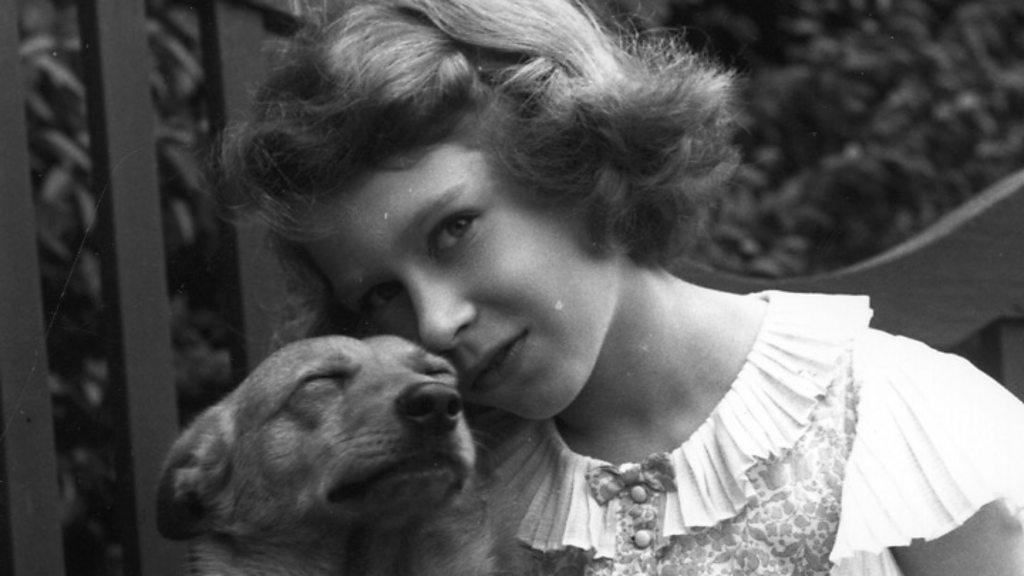The Queen 'admired and respected' Welsh culture
- Published
The Queen visited the National Eisteddfod while a princess and went on to became the first monarch to attend
Elizabeth II was aged just 20 and not yet Queen when she started immersing herself in Welsh life.
Dressed in ancient robes and surrounded by druids, the young princess was invested as an honorary bard at the National Eisteddfod of Wales in Mountain Ash in 1946.
Her bardic name was Elizabeth o Windsor and her experience at the traditional ceremony heralded the start of a long interest in the Welsh language and culture.
Those watching that day could not help but be captivated by her.
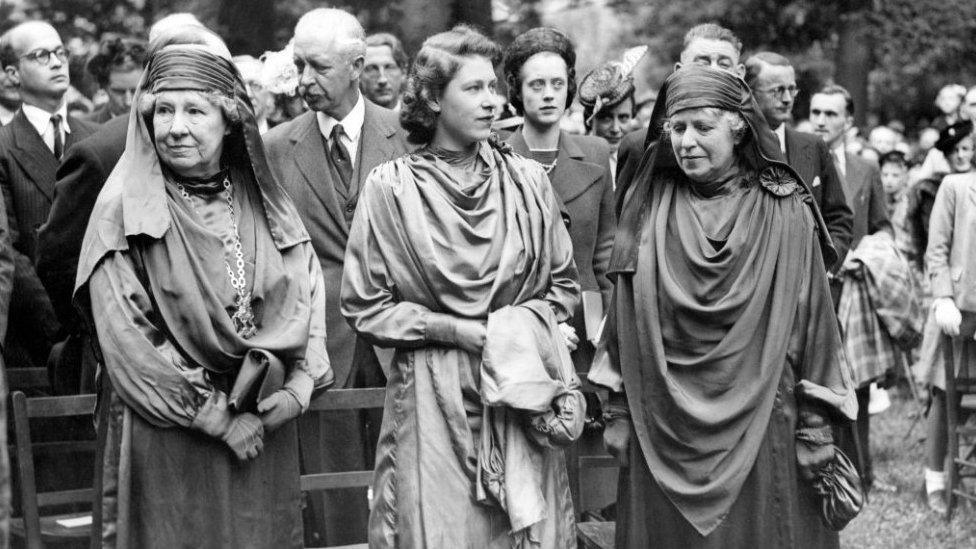
Princess Elizabeth dressed in a robe of green at the National Eisteddfod in Mountain Ash
"My first impression of her was that she looked like a movie star. She was very, very beautiful, elegant... she was an absolute knock-out star," said Cardiff-born journalist Brian Hoey, who was helping to put up marquees at the eisteddfod aged 12.
"The other impression I had of her was the high-pitched voice. I'd never heard people speaking like that, in south Wales, you didn't hear people speaking in that way at all. It was very sort of cut glass."
The occasion was memorable too for the Queen.
Fifty years later Mr Hoey, by now a royal author, was at a reception when the Queen asked him "have you come far?"
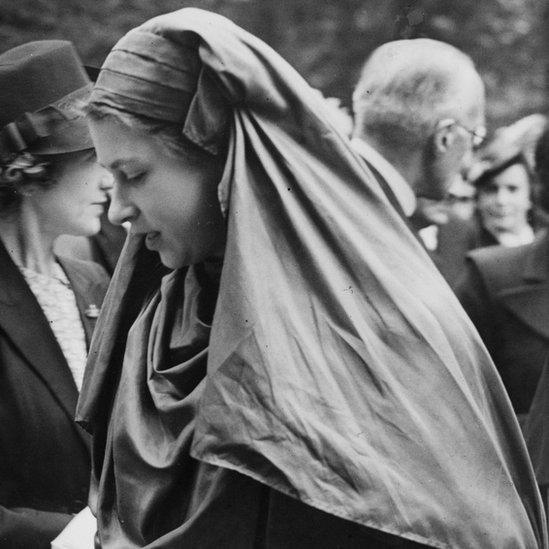
Princess Elizabeth dressed in ancient robes at the 1946 eisteddfod
"And I said 'yes ma'am, I have come from south Wales'," said Mr Hoey.
"'Oh, I have a lovely connection with south Wales', she said. 'It goes back to my early days when I was 20 years old'. And she talked to me about the time she was inducted at the National Eisteddfod. And she said 'my bardic name is Elizabeth o Windsor'. It was still very much in her mind.
"And, indeed, many times since then I spoke to the Queen and she always referred to the fact that she remembered that I came from Wales and she referred to the fact that she had a long connection with Wales."
She was so proud of her association with the eisteddfod that Elizabeth once again visited the festival - this time as Queen in 1960, making history by becoming the first reigning monarch to attend.
She took her two young children to Cardiff on the royal train - Prince Charles, who was 12, and Princess Anne, who was 10 - and they toured the maes (the field where the eisteddfod is held), where the Queen spoke in Welsh.
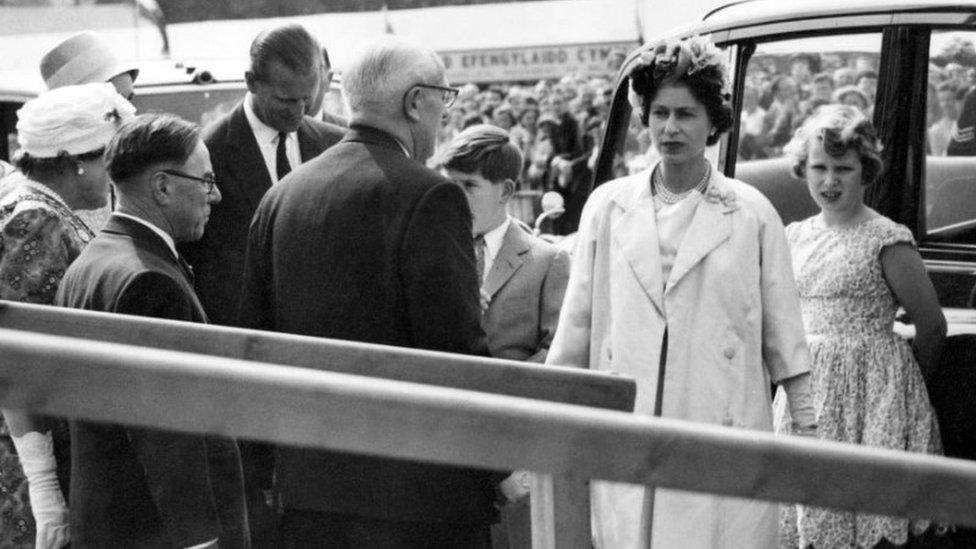
The Queen visited the eisteddfod in 1960 with Prince Philip, Prince Charles and Princess Anne
"I suppose for the Queen it must have been rather difficult coming into what for her was a totally foreign environment," said Mr Hoey who, at that time, was a radio reporter for BBC Wales.
"The whole of the National Eisteddfod is conducted in the Welsh language with which she had no knowledge whatsoever.
"She had been schooled to say a few words and she was quite valiant in doing this. I thought it was very, very brave [to speak in Welsh].
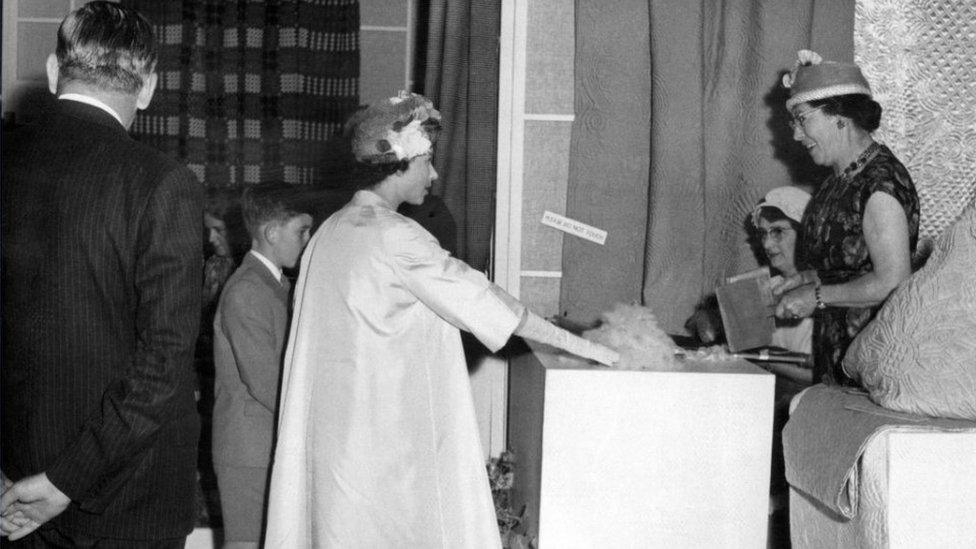
The Queen takes an interest in some of the quilts exhibited at the eisteddfod in 1960
"There were a few criticisms about her pronunciation as there inevitably is with anybody who doesn't speak a particular language in that way.
"But she was fascinated. She loved the ritual. I mean, we talk about the Coronation or the state opening of Parliament and she always loved that ritual.
"So she respected and admired the ritual of the National Eisteddfod and she thought the personification, if you like, of Welsh culture, which is what the National Eisteddfod is all about... She thought it was absolutely imperative that this should be kept alive."
The Queen lost her bardic title in 2006 when a rule change meant only people who spoke Welsh could be a member of Gorsedd of the Bards, but she always kept an interest in Welsh cultural life.
'Always informed'
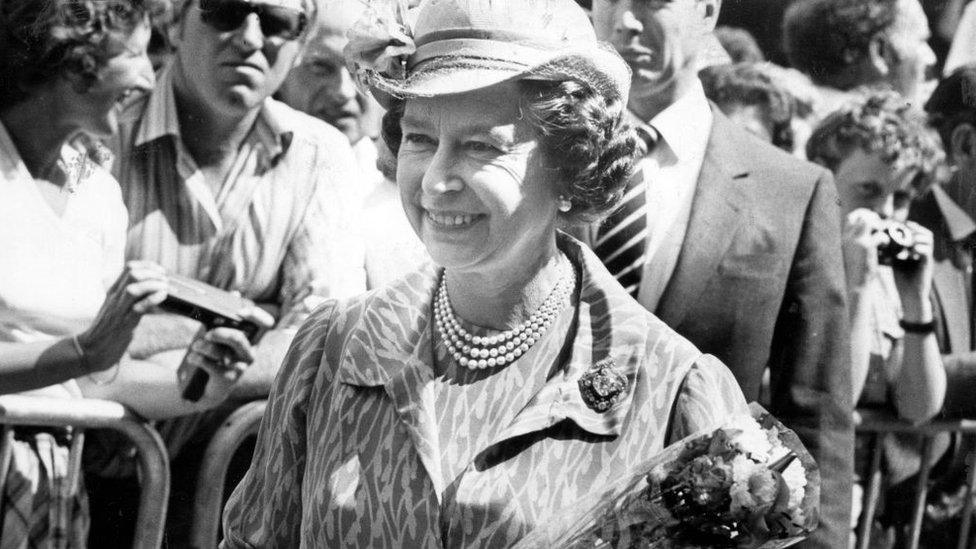
The Queen on a visit to the Royal Welsh Show in July 1983
Mr Hoey said the former Lord Lieutenant of Powys, the Hon Dame Shan Legge-Bourke, who was also one of Princess Anne's ladies-in-waiting, was one of those who kept her up to date.
"She kept the Queen informed about what was going on throughout the whole of Wales and particularly about what was happening in things like the Royal Welsh Show and the National Eisteddfod," added Mr Hoey.
The Queen also had a long association with the Llangollen International Musical Eisteddfod - she first visited the renowned festival in Denbighshire in 1953, a little over a month after her Coronation.
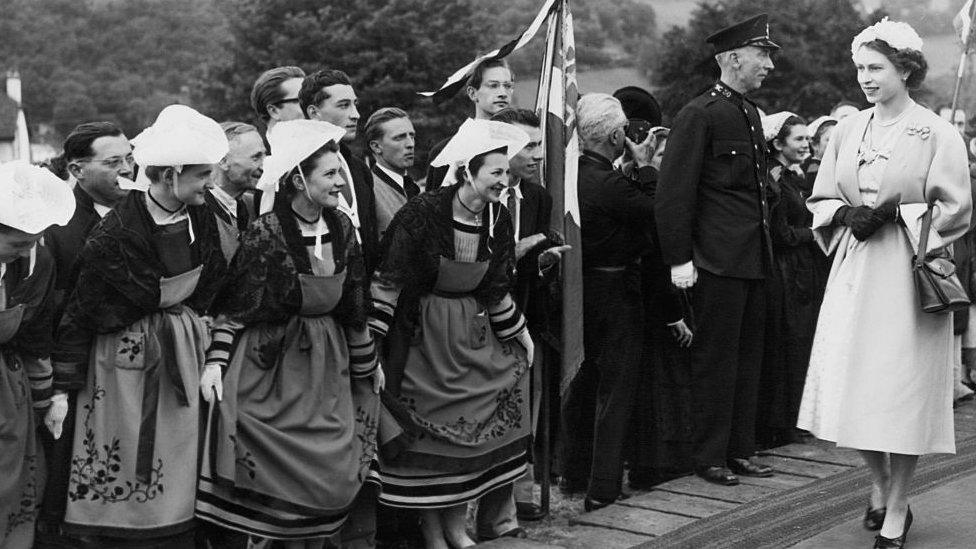
The Queen visited the International Musical Eisteddfod at Llangollen in July 1953
She later returned in 1992 to open the festival's new 'home', the Royal International Pavilion.
The Queen understood how important the Welsh language was in Wales and sent her eldest son, Prince Charles, to Aberystwyth University for a term in the spring of 1969 to learn it ahead of his investiture as Prince of Wales.
Despite his efforts though, he was booed when he later made a speech during a visit to the Urdd National Eisteddfod.
It was something which obviously played on his mother's mind.
As Dr Barry Morgan, the former Archbishop of Wales, said: "I remember her asking me once what his Welsh was like when he had spoken publicly in Welsh.
"And I said 'well, it seemed to me to be excellent. He had obviously practised'. And she seemed very pleased about that."


- Published8 September 2022
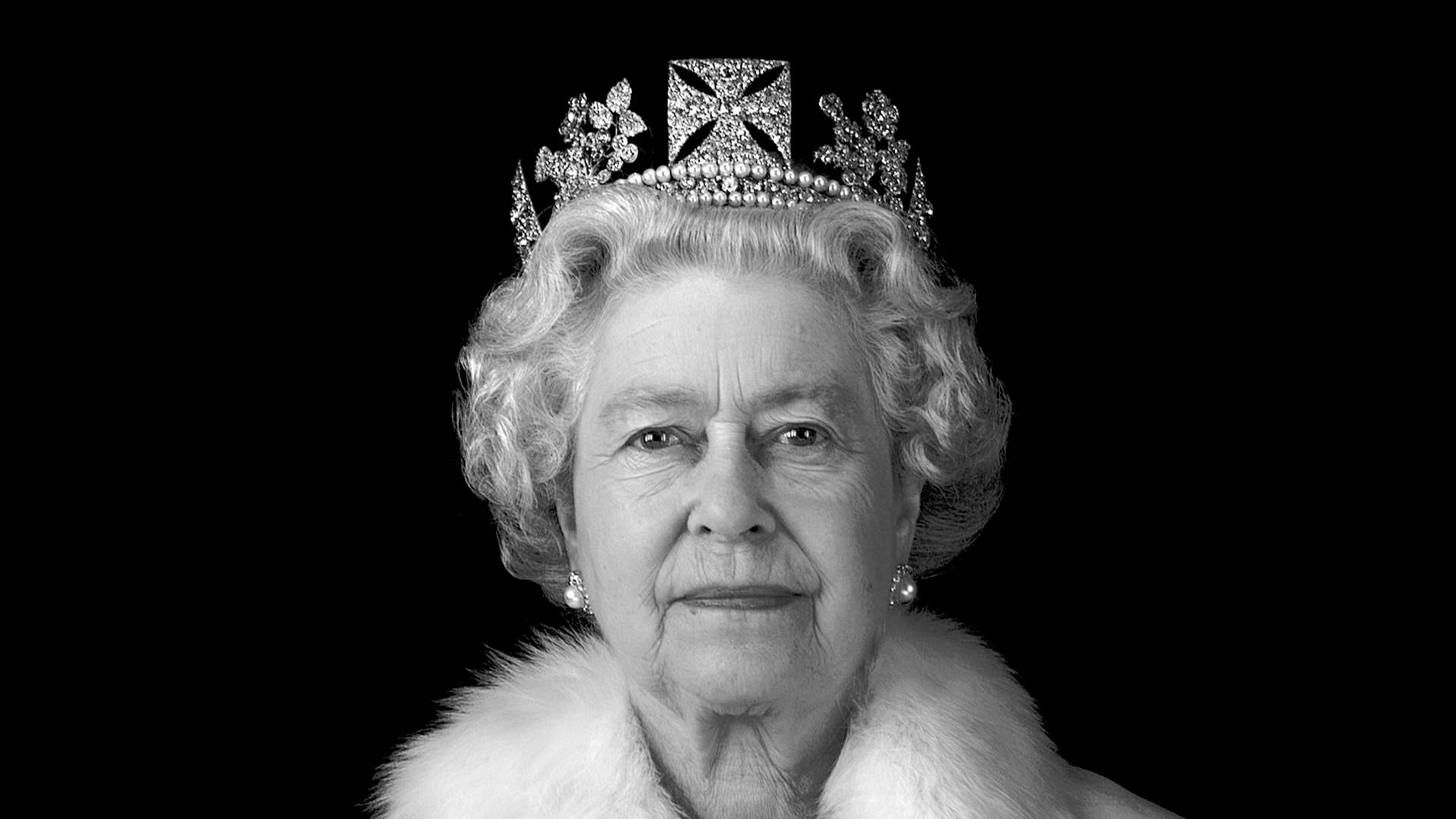
- Published8 September 2022
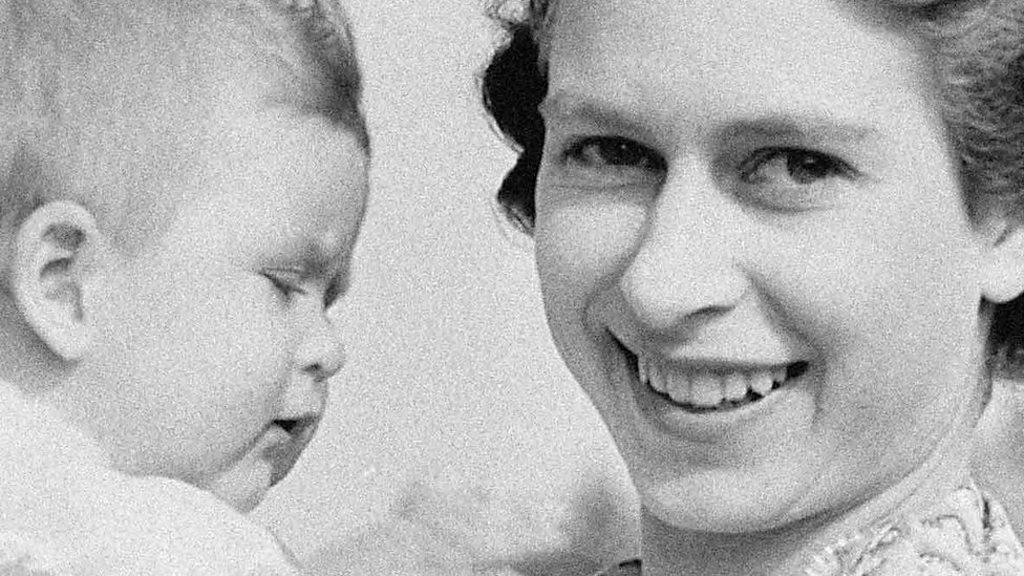
- Published8 September 2022
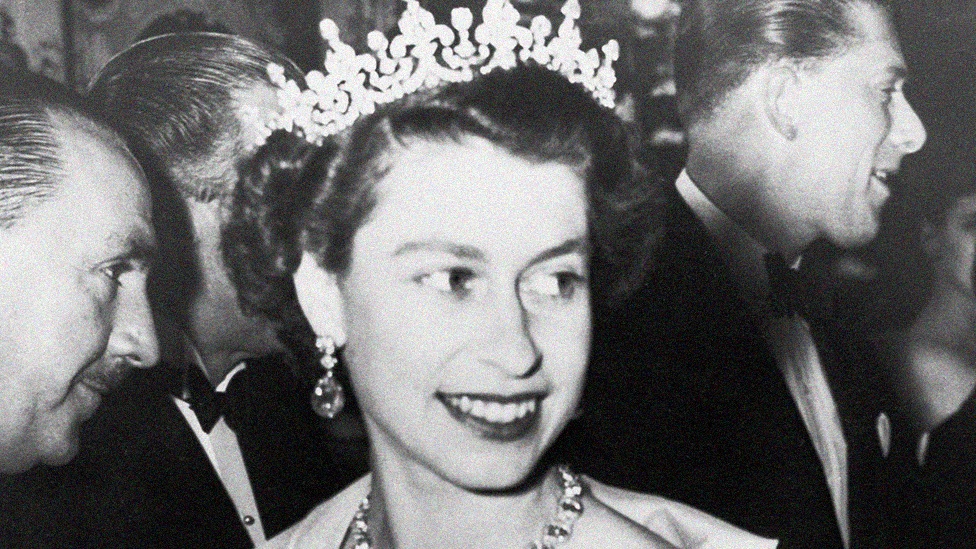
- Published8 September 2022
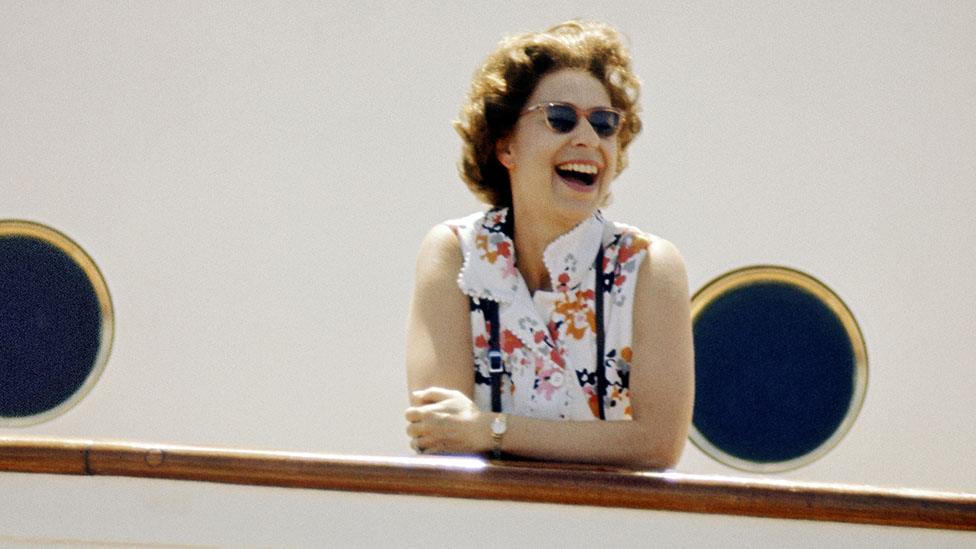
- Published8 September 2022
